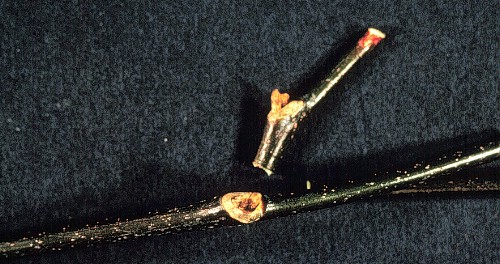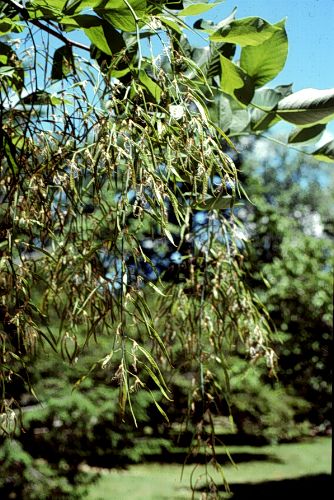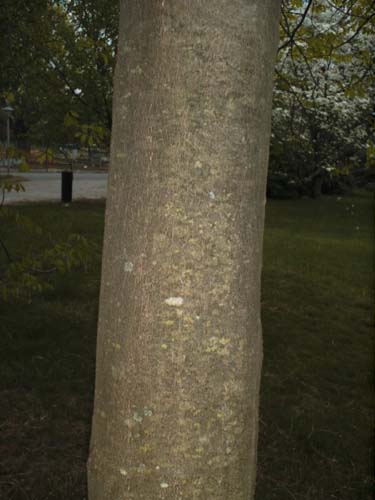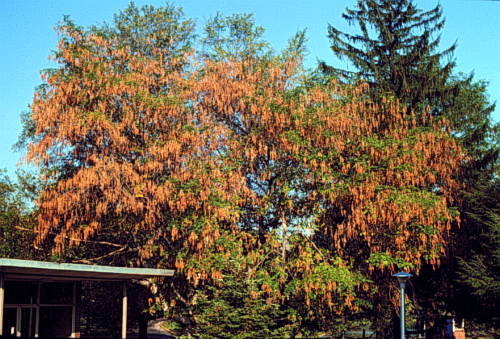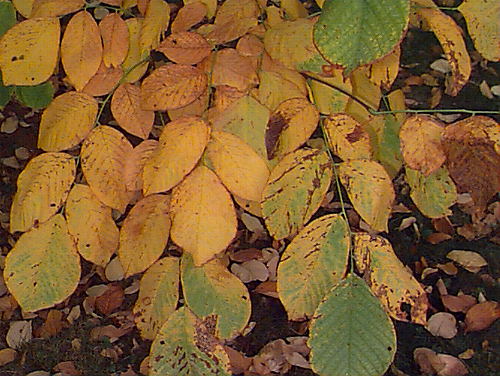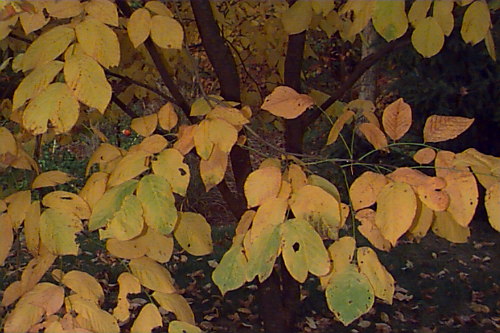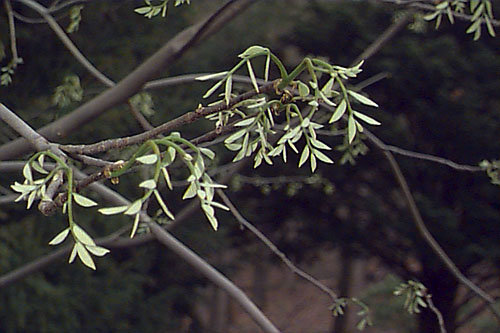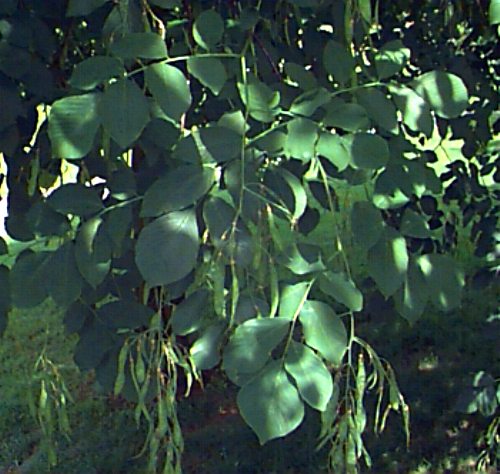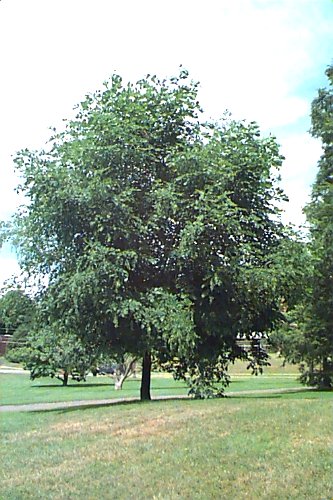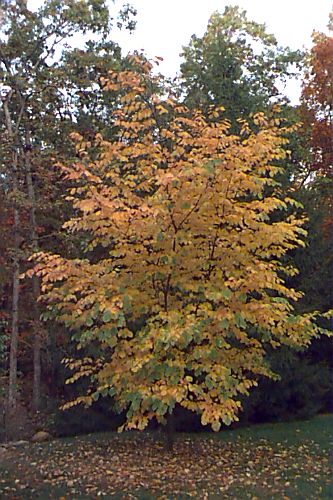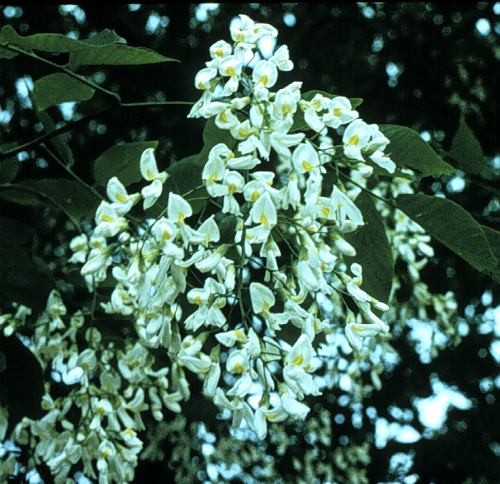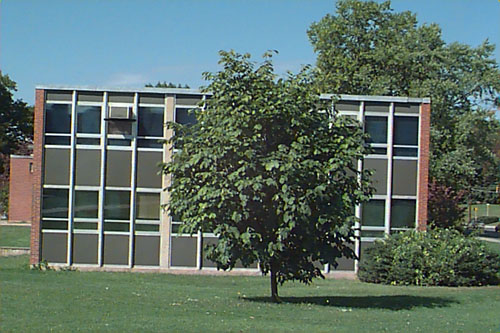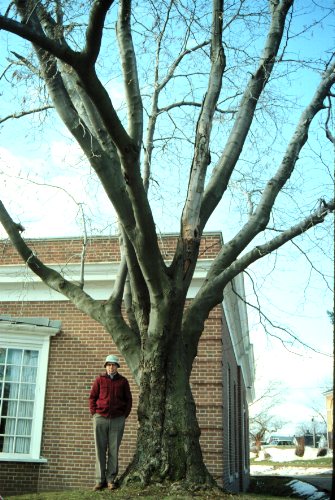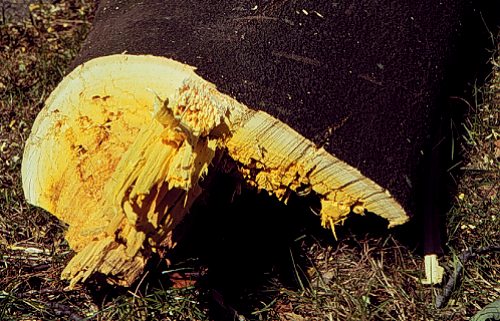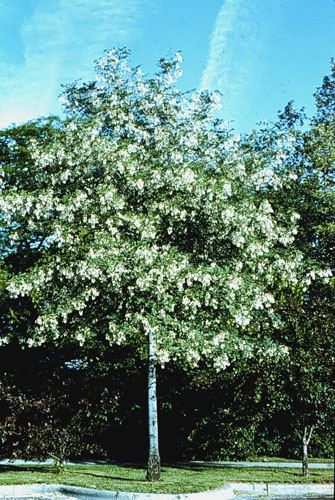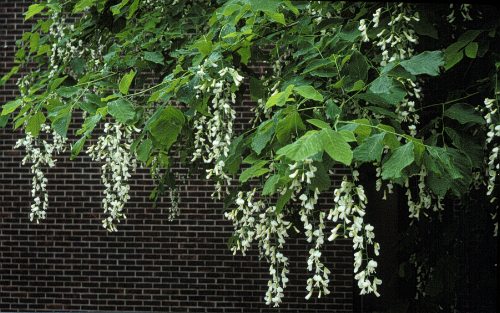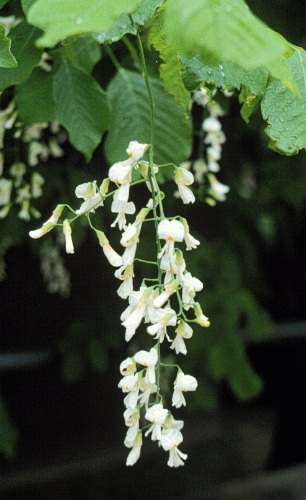Cladrastis kentuckea
American Yellowwood
Leguminosae
ExpandHabitat
- relatively small portions of the southeastern United States; scattered and not common throughout range
- hardy to zone 4
Habit and Form
- a deciduous medium-sized tree
- develops a broad, rounded crown
- branches are upright and spreading
- has a short main trunk with major branches starting within 6' of the ground
Summer Foliage
- alternate, pinnately compound leaves
- 7 to 9 leaflets per leaf
- leaves 8" to 12" long
- leaflets are 2" to 3" long
- leaflets are elliptic to ovate
- terminal leaflet is the largest
- leaf color is bright green, almost with a tinge of blue
Autumn Foliage
- soft mix of yellow, gold and orange
- showy on most trees
Flowers
- white, pea-like flowers
- fragrant
- in 10" to 16" long clusters
- bloom time is early June
- resembles wisteria flowers
- blooms heavily every 2 or 3 years
Fruit
- a flattened pod
- 2.5" to 4" long
- green pods turn brown in October
Bark
- smooth light gray
- quite attractive
- name yellowwood comes from the yellow heartwood
Culture
- full sun
- likes moist, fertile, well-drained soils
- not too particular about pH
- prune in summer to avoid "bleeding" that occurs in winter and spring
- protect from winter sun and wind
Landscape Uses
- lawn tree
- specimen
- for flowers and foliage
- for attractive winter bark
- for attractive fall foliage
Liabilities
- "bleeds when pruned at most times
- narrow branch angles make the tree prone to splitting
- getting consistent annual bloom can be challenging
- bark is susceptible to sun scaled
- late spring frosts damage new growth
ID Features
- has naked buds
- base of petiole covers the bud
- smooth gray bark
- pinnately compound leaves with large leaflets
- fruit pod is somewhat persistent
- bud is hairy
- short main trunk
- upright and spreading branches in almost a vase-shape
- wisteria-like chains of flowers
Propagation
- by seed
Cultivars/Varieties
'Rosea' (also known as 'Perkin's Pink') - A special, rare pink-flowered
form found in Watertown, MA and offered by numerous specialty nurseries. A new
twist on a wonderful native tree.
